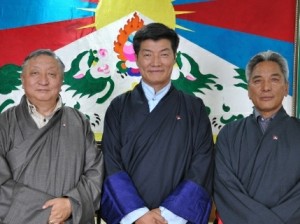On the afternoon of 20 June, Tenzin Khedup, 24, and Ngawang Norphel, 22, walked to the center of a busy street in Dzatoe, Qinghai Province, carrying the banned Tibetan national flag. Calling out for freedom in Tibet, waving the flags and shouting for the return of the Dalai Lama, the two men set themselves ablaze, running and continuing the chants for a few more seconds before falling to the ground as flames consumed them. Tenzin Khedup died on the spot, while Ngawang Norphel is reportedly being treated for serious injuries at an undisclosed location.
Since 2009, 41 Tibetans have self-immolated in protest of restrictive Chinese policies. Most have occurred in traditionally Tibetan areas of Qinghai and Sichuan provinces, with 28 taking place in 2012 alone. All have shouted slogans calling for freedom in Tibet, reform of Chinese social policy in the region, an end to religious repression, and the return of the Dalai Lama. 31 out of the 41 have died as a result of their injuries.
While the majority of the self-immolators have been monks or nuns, in recent months the number of laypeople turning to these desperate acts is increasing. On 15 June, Tamdin Thar, a herdsman from Amdo thought to be in his 50s, set himself on fire outside a People’s Armed Police base in Chentsa, Qinghai Province. Tamdin Thar had been moved with his family to the area several years earlier under a controversial government program housing nomadic families in permanent settlements.
Two weeks prior to this incident on 30 May, a 33 year-old mother of three named Rikyo self-immolated in Dzamthang, Sichuan Province. The International Campaign for Tibet reports that thousands of Tibetans gathered for her cremation in the middle of a rainstorm, and did not disperse until nearly 3 AM.
The first self-immolations carried out in Lhasa, which is under the greatest level of police surveillance, took place on 27 May. Two young restaurant co-workers – Dargye, 25, from Ngaba and Dorje Tseten, 19, from Labrang – set themselves ablaze in front of the Jokhang Temple, one of Tibet’s holiest religious sites. Dorje Tseten succumbed to his injuries at the scene, and his entire household was detained shortly thereafter. Dargye is believed to have survived, but his location is unknown.
Coinciding with the observance of Saga Dawa, an important religious period for Tibetan Buddhists that commemorates the Buddha’s birth, enlightenment and death, the 27 May immolations prompted the Chinese government to issue an “indefinite” ban on foreign tourists entering the Tibet Autonomous Region (TAR). The Washington Post reported shortly afterward that Lhasa resembles “an armed camp,” with special police forces patrolling the streets and a highly visible military presence in the city. The travel ban was lifted on 20 June, but restrictions on foreign travelers in the Tibetan capital remain tight.
The closure after this most recent spate of self-immolations has renewed criticism from international human rights organizations and governing bodies alike. “Cutting off Tibet to the outside world will not solve tensions in Tibet,” Amnesty International said in a statement on 11 June. EU Policy Chief, Catherine Ashton, also called publicly for dialogues between China and the Central Tibetan Administration, as well as for freedom of expression, assembly, religion and language inside the TAR. She reiterated the calls of many governing bodies around the world for China to allow foreign diplomats and journalists to visit the area.
Meanwhile, China appeared unperturbed as it celebrated its new status as the world’s second largest economy at the 2012 G20 Summit in Los Cabos, Mexico. Given its clout as one of the largest contributors to the International Monetary Fund and other global institutions, as well as its role as a major lender to many recession-ridden Western countries, the global community may be reluctant to pressure China to address the worsening situation in Tibet any time soon.





 Print
Print Email
Email